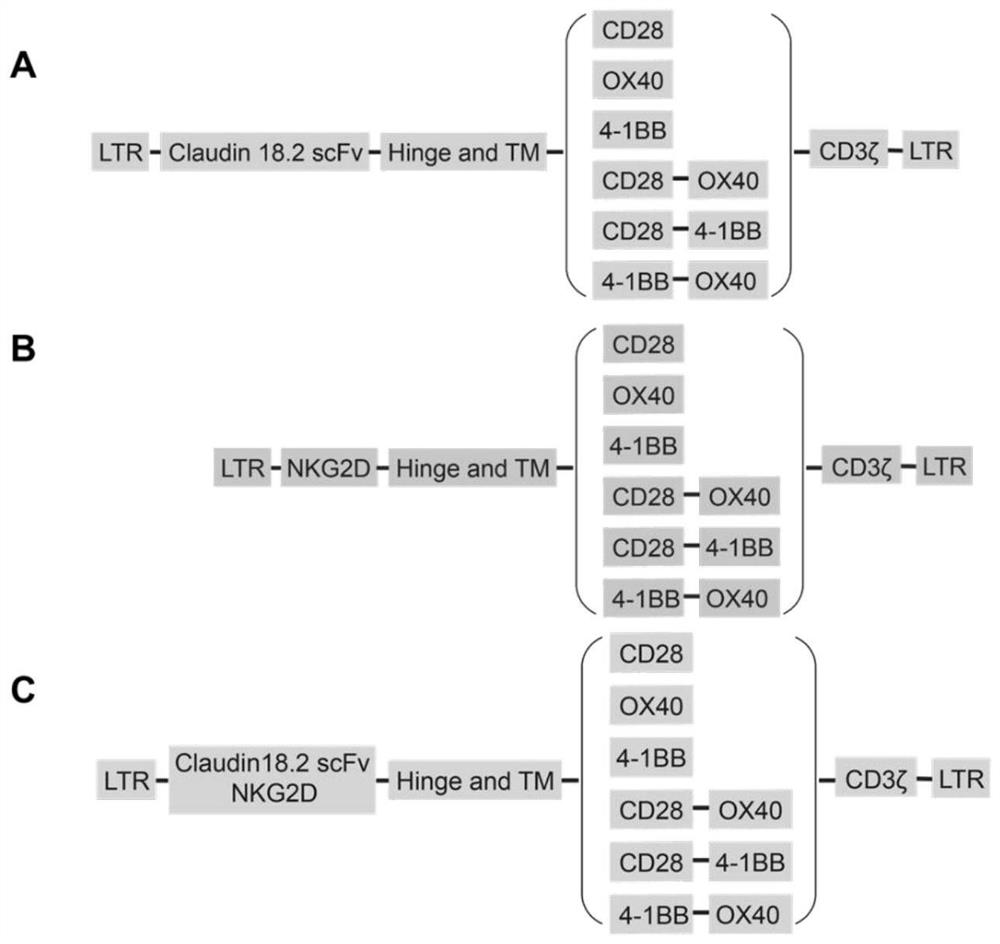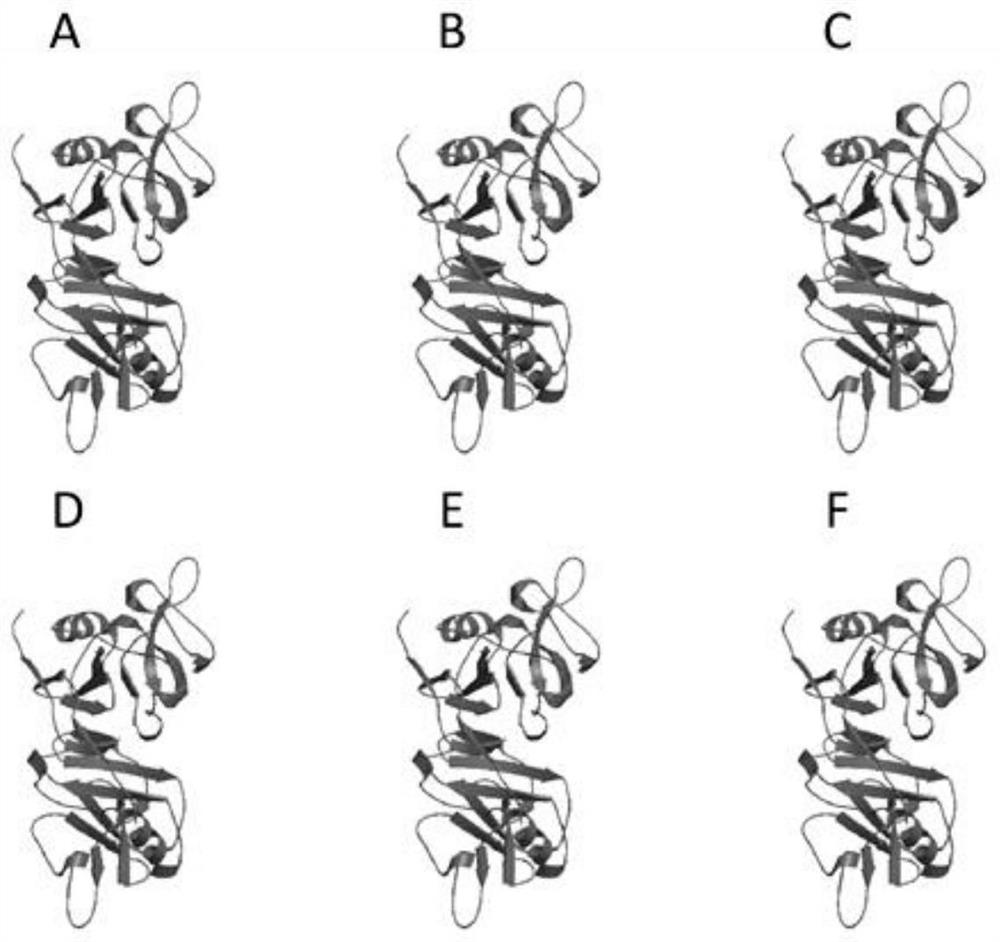Chimeric antigen receptor cell targeting human claudin18.2 and nkg2dl and its preparation method and application
A chimeric antigen receptor, targeting technology, applied in genetically modified cells, microorganism-based methods, cells modified by introducing foreign genetic material, etc., can solve the problem of low killing efficiency and low tumor cell specificity, etc. problem, to achieve the effect of improving killing efficiency, high killing rate and simple steps
- Summary
- Abstract
- Description
- Claims
- Application Information
AI Technical Summary
Problems solved by technology
Method used
Image
Examples
Embodiment 1
[0127] Example 1 Expression plasmids of chimeric antigen receptors bispecifically targeting human Claudin18.2 and NKG2DL
[0128] The overall design is as follows:
[0129] 1. Determination of the amino acid sequence of the bispecific chimeric antigen receptor targeting Claudin18.2 and NKG2DL
[0130] First, the full-length amino acid sequence of human NKG2D (NP_031386.2) was searched from the Genbank database of the National Library of Medicine (NCBI), and the full-length human amino acid sequence number of Claudin18.2 is: NP_001002026.1. After immunizing mice with human Claudin18.2 protein, the antibody fragment was purified and humanized to obtain a humanized single-chain antibody (scFv) against human Claudin18.2; the single-chain antibody was composed of a heavy chain and a light chain. The connecting segment between chain and light chain is (G 4 S) 3 Finally, 4 scFv antibody fragments with high affinity to the target antigen Claudin18.2 were obtained through effect scr...
Embodiment 2
[0155] Example 2: Preparation of virus liquid of lentiviral vector
[0156] The recombinant plasmid (KD-496 expression plasmid) obtained in Example 1 and the packaging vector pol / gag, Rev and VSVG of the chimeric antigen receptor targeting human Claudin18.2 and NKG2DL bispecifically, according to 12:10:5 :6 ratio, with Lipofectamine TM 6000 transfection reagents (purchased from Beyontien, product model C0526) were used to co-transfect 293T cells (see the transfection instructions for specific transfection procedures), and replaced with complete medium 6 hours after transfection (purchased from hyclone, The product model is SH30243.01), after 48 hours and 72 hours of culture, the cell supernatants rich in lentiviral particles were collected respectively, and the virus supernatants were concentrated by ultracentrifugation to obtain the bispecific targeting human Claudin18.2 The virus liquid of the lentiviral vector of the chimeric antigen receptor of NKG2DL (hereinafter referr...
Embodiment 3
[0157] Example 3: Isolation and culture of T cells
[0158] Fresh peripheral blood from healthy donors was taken, and fresh peripheral blood mononuclear cells were separated by density gradient centrifugation; paramagnetic beads coupled with anti-CD3 antibody and anti-CD28 antibody (purchased from Invitrogen, USA, product information for Human T-Activator CD3 / CD28) to enrich CD3+ T cells, specifically, dilute peripheral blood mononuclear cells to a concentration of (10-30)×10 6 single cells / ml, and then mixed the magnetic beads and cells in a culture dish at a ratio of 3:1, incubated at room temperature for 2-3 hours, and used a Magnetic particles concentrator (MPC for short, purchased from Invitrogen, USA) company) to enrich CD3+ T cells. Finally, the enriched CD3+T cells were resuspended in culture medium (purchased from Life Technologies, USA, product information is OpTmizer TM T-Cell Expansion SFM), adjusted to a cell concentration of 1×10 6 pcs / ml, finally at 37°C, ...
PUM
 Login to View More
Login to View More Abstract
Description
Claims
Application Information
 Login to View More
Login to View More - R&D
- Intellectual Property
- Life Sciences
- Materials
- Tech Scout
- Unparalleled Data Quality
- Higher Quality Content
- 60% Fewer Hallucinations
Browse by: Latest US Patents, China's latest patents, Technical Efficacy Thesaurus, Application Domain, Technology Topic, Popular Technical Reports.
© 2025 PatSnap. All rights reserved.Legal|Privacy policy|Modern Slavery Act Transparency Statement|Sitemap|About US| Contact US: help@patsnap.com



